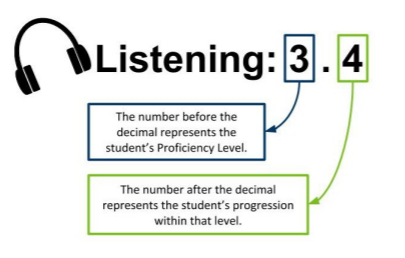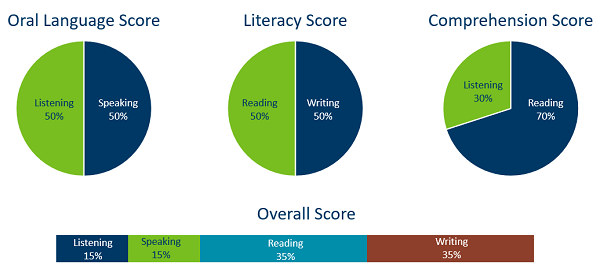Interpret Statewide Assessment Scores
This page outlines how the assessments are scored—including how to interpret individual student scores.
The statewide assessments measure a snapshot of student learning of the Minnesota Academic Standards, Minnesota Comprehensive Assessment (MCA) and Minnesota Test of Academic Skills (MTAS)/Alternate Minnesota Comprehensive Assessment (Alt MCA) and progress towards English language proficiency (ACCESS and WIDA Alternate ACCESS).
After students complete the assessments each spring, final results are provided in individual and summarized reports organized at the school, district, county, and state levels.
Public districts and charter schools use statewide assessment results as one part of their balanced comprehensive assessment system that works in coordination to provide information about student learning of the standards.
MCA and MTAS/Alt MCA results should be used at a summarized level (student group, grade, school, district, etc.) to examine equitable learning opportunities for students to learn the standards.
For more detailed information on what is included in the assessment results reports, how to use, and where to access them, visit the Use Statewide Assessment Results page.
MCA Scores
What does a scale score from the MCA mean?
Scale scores are created by translating student results. They are based on the number of questions answered correctly (raw score) for Science MCA. They also consider the pattern of responses and the questions difficulty for Reading and Math MCAs when creating the standardized scale. On the MCA, the scale score always begins with a whole number ranging from 3–11, followed by two additional digits ranging from 0–99. The first digit(s) represents the grade level tested, and the last two digits represent the score the student received.
On the Reading and Mathematics MCA and MTAS, each scale score is categorized into one of four achievement levels: Does Not Meet, Partially Meets, Meets, and Exceeds the Standards.

With the transition to a new series of assessments for science (MCA-IV and Alt MCA), this terminology has been updated to performance levels: Advanced, Meets, Intermediate, and Beginning. Achievement/performance levels are provided to assist in the interpretation of scale scores and connect student performance to grade-level content standards.
What are the minimum scores required for students to achieve the "Meets the Standards" level on the Reading and Math MCAs and does it change each year?
The minimum score required for students to demonstrate understanding at the Meets the Standards level and above is a scale score that ends in 50 for the last two digits of the score. The minimum score required at each achievement level (cut score) is predetermined by educators during the standard setting process. Each cut score is based on the level of understanding students must demonstrate across achievement levels for each standard (Achievement Level Descriptors). The cut scores remain the same each year until new academic standards and assessments are implemented. In other words, final student scores are not determined by how other students perform on the assessment each year.
Note: Due to 2024–25 being the first administration of the new Science MCA and Alt MCA, results must go through the standard setting process in summer 2025 to determine the cut scores for the four levels of performance.
Can I compare scale scores for a student across grade-levels?
No. Since the first digit of a scale score matches the grade-level tested, the scores are often misinterpreted as being on a continuous scale from one grade to the next. However, the scales for the MCA and MTAS/Alt MCA are based on different grade-level standards for each content area and the scales for each grade-level test are developed independently. This means that the scale scores of individual students cannot be compared across grade levels of a subject because they are not on the same scale. Please refer to the resources below for more information and examples.

How can I use individual student scores to look at progress?
Individual scores on the MCA were not developed to be compare across grade levels by comparing the last two digits, subtracting numbers, or other similar methods. You can, however, look at a student's achievement level across their grade levels to gain a general sense of progress in a subject over time. Although the academic standards are aligned across grade levels, the content is grade specific. It is difficult to make claims about whether students have retained knowledge from previous grades and are improving based on MCA or MTAS scores.
Individual student results from the MCA should always be considered using more fine-grained evidence of student learning, such as projects and classroom assessments when making decisions.
Note: With the transition to new assessments and to the new performance levels, results of the new assessments cannot be compared to previous years.
For more information about appropriate uses of statewide assessment results, see the Use Statewide Assessment Data page.
ACCESS for ELLs Scores
What do the different individual student scores from ACCESS mean?
There are three types of scores students receive on ACCESS: scale scores, proficiency levels, and composite scores.
Scale scores are created by translating the scored results onto a standardized scale for each domain. While scale scores can show progress in language proficiency over time, they do not have any inherent meaning; scale scores require proficiency levels to provide that meaning. Proficiency levels on the ACCESS are interpretive scores that describe the student’s performance in terms of the six WIDA English language proficiency levels—level 1: entering, level 2: emerging, level 3: developing, level 4: expanding, level 5: bridging, and level 6: reaching—as shown below.

The proficiency level score is a whole number followed by a decimal. The whole number before the decimal—outlined in blue—reflects the student’s proficiency level, and the number after the decimal—outlined in green—reflects how far the student has progressed within that level. For example, a student with a score of 3.4 is at proficiency level 3 and is not quite halfway toward achieving proficiency level 4.

In addition to proficiency level and scale scores for each domain, students receive a proficiency level score and a scale score for different combinations of the language domains. These composite scores are Oral Language, Literacy, Comprehension, and Overall.

How are individual scores used to determine whether students are exited from English learner programming?
The ACCESS test does not have a set definition of proficiency used across the WIDA Consortium; the definition of proficiency is determined by each state. Students must be exited from English learner programming once they have the academic English language proficiency to be successful in their courses. Since grade-level expectations and standards are different in each state, the level at which English is no longer a barrier for the students also varies.
In the state of Minnesota, an English learner (EL) is considered proficient in English if their ACCESS Overall composite proficiency level is 4.5 or higher and their proficiency levels for at least three of the four domains are 3.5 or higher. Students must demonstrate English language proficiency on ACCESS in order to be exited from English learner programming. For more information on how the ACCESS is used for reclassification of English learners, refer to the English Learner Education page.
Can proficiency levels and scale scores be used to look at growth across multiple years?
Yes. The same scale is used for each domain across all grades. This means that scale scores can be used to track how much a student’s proficiency within a domain increase over time. Scale scores allow you to compare student performance across grades, within each domain, and with more detail compared to only looking at proficiency levels.
For more information about interpreting ACCESS scores, refer to the following resources:
- Guidebook: Exploring ACCESS for ELLs Data – Minnesota specific guidebook for using ACCESS data.
- WIDA Can Do Descriptors – More detailed information highlighting what English learners can do at various stages of language development across different content areas.
- WIDA Proficiency Level Descriptors – Describe typical ways multilingual learners might develop across levels of English language proficiency as they move toward meeting Language Expectations.
- The ACCESS Interpretive Guide provides more information about ACCESS including the types of scores reported for students in kindergarten and grades 1–12.

